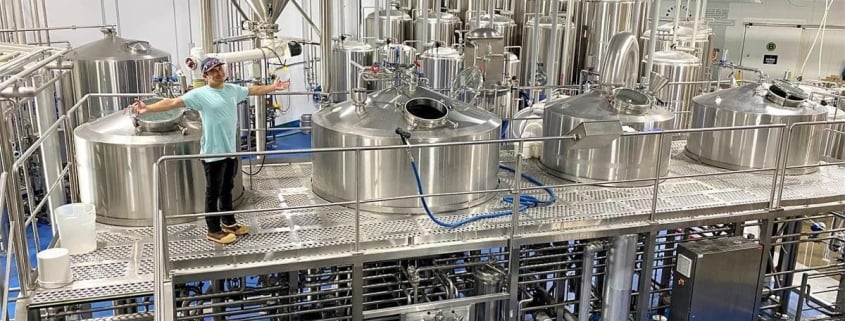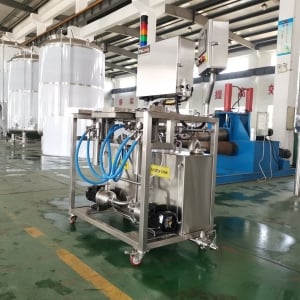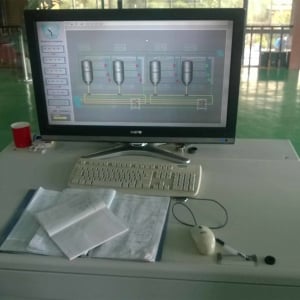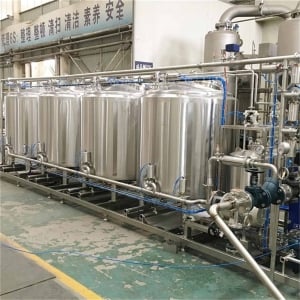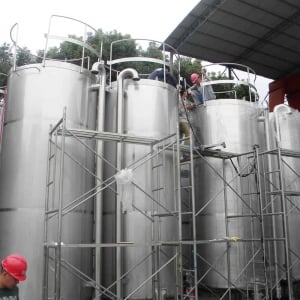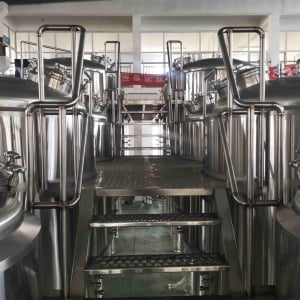Guide to 15 BBL Mash Tuns
A 15 barrel (BBL) mash tun is a key piece of brewing equipment used to convert malt starches into fermentable sugars during the mashing process. This large mash tun allows medium-sized craft breweries producing anywhere from 3,000-10,000 barrels annually to efficiency mash larger batches of beer.
This comprehensive guide will explore 15 BBL mash tuns to help brewery owners understand their options when investing in a mash tun of this size. We’ll compare different 15 BBL mash tun types, manufacturers, designs, pricing, installation needs, operation, maintenance requirements, and pros and cons of different setups. Whether you’re opening a brand new 15 BBL brewhouse or upgrading equipment, use this resource to make informed decisions about purchasing a mash tun.
Overview of 15 BBL Mash Tuns
A mash tun is a vessel used for mashing – the process of steeping crushed malt in hot water to convert starches into fermentable sugars that yeast can turn into alcohol and CO2 during fermentation.
In a nutshell, here’s what to know about 15 BBL mash tuns:
Table 1. 15 BBL Mash Tun Overview
| Parameter | Details |
|---|---|
| Batch size | 15 barrels or 465 gallons per batch |
| Production scale | Medium craft brewery, annual production around 3,000 – 10,000 BBLs |
| Mash tun material | Stainless steel |
| Overall height | ~5-6 feet tall |
| Diameter | ~4-5 feet across |
| Weight | 1,500 – 4,000 lbs |
| Volume capacity | 20-30 barrel total capacity |
| Temperature range | Adjustable, up to 170°F |
| Heat source | Direct or indirect steam via internal/external heat exchanger |
| Agitation | Rakes or paddles for mash stirring |
| Mashing types | Single infusion, step mashing, decoction mashing |
| Price range | $30,000 – $100,000+ |
With dimensions designed for mashing roughly 15 barrels of wort per batch, these mash tuns offer the perfect balance of batch size and brewhouse flexibility for many mid-volume craft breweries.
Below we’ll explore all the different options on the market so you can find the ideal 15 BBL mash tun setup for your brewing needs and budget.
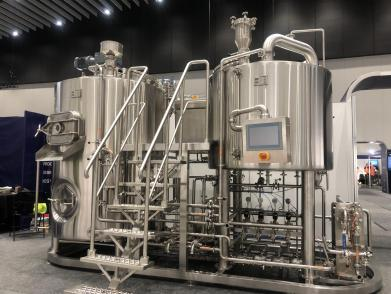
15 Barrel Mash Tun Types Compared
Mash tuns come in a variety of configurations when it comes to design, heating methods, temperature control, and mash filtration. Here we compare the most common types of 15 BBL mash tuns available from major manufacturers:
Table 2. 15 BBL Mash Tun Equipment Types
| Type | Description |
|---|---|
| Single infusion mash tun | Simple mash tun design with single temperature control setpoint for basic infusion mashing |
| Step mash tun | Sophisticated tun with ability to program multi-step temperature mashing profiles |
| Decoction mash tun | Specialized tun allowing removing and boiling a portion of the mash (decoction) |
| Direct steam heated | Steam coils or jackets inside tun heat mash directly |
| Indirect steam heated | External heat exchanger heats water that’s pumped into tun |
| Insulated mash tun | Additional insulation to improve thermal efficiency |
| Automated rake system | Motorized arms stir and mix mash automatically |
| Manual paddle mixing | Requires manually stirring mash with paddle |
| Grant attachment | Underside screen filter allows lautering spent grains from wort |
Brewers can choose between basic single infusion mash tuns up to advanced computerized systems with step mashing profiles, automated mixing, and integrated lautering systems. Key decisions include heating types, insulation needs, and mash agitation requirements.
We’ll analyze the pros, cons and costs of these different options in detail so you can determine what functionality you really require in a 15 BBL system.
Leading 15 BBL Mash Tun Manufacturers
Many commercial brewing equipment companies offer 15 barrel mash tun systems catered toward mid-volume craft brewery production goals. Here are some of the most reputable US manufacturers to consider:
Table 3. Notable 15 BBL Mash Tun Manufacturers
| Company | Location | Price Range |
|---|---|---|
| JV Northwest | Canby, OR | $30,000 – $60,000 |
| Specific Mechanical | Victoria, BC | $35,000 – $75,000 |
| Premier Stainless | Escondido, CA | $40,000 – $100,000 |
| AAA Metal Fabrication | Oregon City, OR | $30,000 – $60,000 |
| Psycho Brew | Louisville, CO | $35,000 – $90,000 |
| Craftwerk Brewing Systems | Baltimore, MD | $25,000 – $140,000 |
| Newlands Systems | Abbotsford, BC | $45,000 – $100,000 |
While there are too many companies to list them all, this table shows leading mash tun fabricators known for quality equipment and good customer service. Most are located on the West Coast within craft beer hubs, but you can find vendors nationwide.
Reach out for quotes on different models with desired features before purchasing your mash tun. Now let’s compare design elements in more detail.
Key 15 BBL Mash Tun Components and Options
When evaluating 15 barrel mash tun systems, here are the main pieces of equipment and options to consider:
Table 4. 15 BBL Mash Tun Design Elements and Choices
| Part | Options | Considerations |
|---|---|---|
| Vessel construction material | Stainless steel – 304 or 316 grades | 304 has good corrosion resistance. 316 has higher chromium/nickel for enhanced durability and sanitation |
| Height and diameter | 5’H x 4’D is typical | Dimensions vary slightly by brand |
| Total volume capacity | 20 barrels (~620 gal) – 30 barrels (~930 gal) | Size to match batch sparge needs |
| Heating system | Direct steam, indirect steam | Direct injects steam inside tun. Indirect uses external heat exchanger loop |
| Insulation | Standard 1″ insulation | Upgrade to 2-4″ insulation sleeves for better heat retention |
| Agitation method | Automatic rakes, manual paddle | Rakes designed specifically for wall shape and size |
| Temperature sensors | Analog, digital | Digital provides more accuracy and better automation |
| Temperature range | Up to 170°F+ | Ensure it reaches desired saccharification temperatures |
| Custom fabrications | Valves, fittings, sight glasses, etc | Choose any specialty parts for ease of operation |
While basic mash tuns contain just a stainless container with heating capabilities, customizable options like insulation, automatic mixing paddles, and digital controls help optimize the mashing process. Consider options that suit your standard recipes, skills, and functionality desires.
Making informed decisions around these design choices will lead you toward the ideal mash tun for your needs and budget. Next we’ll break down typical pricing.
How Much Does a 15 Barrel Mash Tun Cost?
A brand new 15 barrel mash tun is a major investment for any growing craft brewery. Here’s an overview of typical pricing from leading manufacturers:
Table 5. 15 BBL Mash Tun Price Range
| Type | Price Range |
|---|---|
| Basic single infusion mash tun | $30,000 – $50,000 |
| Upgraded step/decoction mash capability | $40,000 – $60,000 |
| Fully-automated, insulated mash tun | $50,000 – $100,000+ |
As you can see, costs can vary widely depending on features. Basic 15 barrel systems start around $30,000. But computerized, custom setups with advanced heating controls, mixing automation, and maximum insulation can exceed $100,000. Mid-range step mash tuns with some upgrades typically cost $40,000-$60,000.
Always get quotes from multiple vendors, as prices for similarly equipped mash tuns can range drastically between manufacturers. Now let’s go over key considerations around installation.
Installing a 15 BBL Mash Tun System
Installing a mash tun requires proper brewhouse layout planning, space allocation, infrastructure upgrades, and equipment moving logistics. Here are key points when incorporating a 15 BBL system:
Table 6. 15 BBL Mash Tun Installation Details
| Consideration | Equipment Needs |
|---|---|
| Floor space | ~25-30 sq ft |
| Ceiling height | 10+ ft vertical clearance |
| Weight load | Reinforced floor for 1,500 – 4,000 lbs |
| Electrical | 120-240V outlet, 30 amp |
| Plumbing | Steam lines, condenser lines, glycol lines if indirect heated |
| Moving equipment | Forklift or loading dock for large vessel |
| Grain handling | Grist case, grist hydrator, grist conveyance pipe |
| Treated water | Hot liquor back inlet line |
| Spent grain removal | Outlet to grain removal conveyor or dump |
| Clean-in-place | CIP ball spray assembly |
| Automation | Interface with brewery control systems as needed |
While equipment companies handle equipment fabrication, brewhouse design and infrastructure upgrades are the responsibility of owners and contractors. Ensure you allocate adequate space for grain handling systems, glycol chiller lines if needed, and spent grain drainage flows. This supports efficient ongoing mash tun operation.
With equipment in place, let’s go over the mashing process itself and operation considerations.
Operating a 15 BBL Mash Tun System
Operating a mash tun properly is vital for extracting fermentable sugars from malt and achieving target gravities into fermenters. Here are key operation steps:
Mash Cycle Steps
- Add crushed grain into mash tun according to recipe.
- Recirculate hot liquor from kettle through heat exchanger to raise mash tun to desired saccharification rest temperature.
- Monitor mash temperature and adjust hot liquor flow rate to maintain rest temperature, usually 150-155°F.
- Engage rakes/paddles to stir mash thoroughly and avoid temperature gradients.
- After 60 minute enzyme rest, begin recirculating wort from the mash tun bottom back to the top.
- Upon completion of mash cycle, open valve to vorlauf until wort runs clear.
- Sparge with hot liquor and drain mash tun completely into the kettle.
Well-trained brewers will achieve optimal extraction efficiency by closely tracking temperatures and regularly stirring the mash. Calibrating sensors ensure your brewing software reflects reality.
Consistency is also key – once your recipe and process are dialed in, repeat them precisely each batch. Now let’s tackle cleaning.
Cleaning and Maintenance Needs for 15 BBL Tun
Like all brewhouse equipment, keeping your mash tun in tip-top shape through periodic cleaning and maintenance is key to longevity and performance. Here are best practices:
Table 7. 15 BBL Mash Tun Cleaning and Maintenance
| Activity | Frequency | Procedure |
|---|---|---|
| Interior Wash | Every batch | Hot PBW cycle followed by fresh water rinse |
| CIP Clean | Weekly | Caustic and acid wash cycle |
| Inspect Sensors | Monthly | Check calibration and function |
| Check/Replace Seals | 6 months | Monitor and replace worn gaskets |
| Full Inspection | Annual | Drain, enter vessel, thoroughly inspect interior condition |
| Surface Passivation | As needed | Restore corrosion resistance of stainless steel |
Beyond day-to-day washes, periodically conduct thorough visual inspections from inside when the vessel is fully drained and cooled. Check for any pitting or wear around welds and joints annually. Refurbish or replace any mechanical parts that show signs of wear, especially mash rakes and seals around valves or sight glasses.
With close adherence to cleaning and maintenance protocols, your mash tun will deliver reliable performance and consistency over years of operation.
Key Pros and Cons of 15 Barrel Mash Tuns
When weighing up your mash tun buying decision, think holistically about advantages and limitations of 15 BBL systems:
Table 8. 15 Barrel Mash Tun Pros and Cons
| Pros | Cons |
|---|---|
| Efficient batch size for maximizing 3-7 BBL fermenter fills | Significant capital investment required |
| Mashing flexibility with sparging and grant attachments | Takes up substantial brewhouse floorspace |
| Automated options simplify mashing procedures | Learning curve getting consistency in new system |
| Precise computerized step temperature control | Potential bottlenecks without proper upstream/downstream capacity |
| Customization for specific brewery goals | Agree on all features in initial spec’ing to avoid costly change orders |
Ultimately while these mash tuns involve major spending upfront, the efficiencies and quality gains usually outweigh the costs long term for growing craft breweries seeking to maximize production volumes closer to 10,000 BBL per year.
Carefully weigh the advantages and commitments before purchasing your mash tun. An experienced brewery engineering consultant can also help analyze needs and specifications during planning stages, before making final investment decisions.
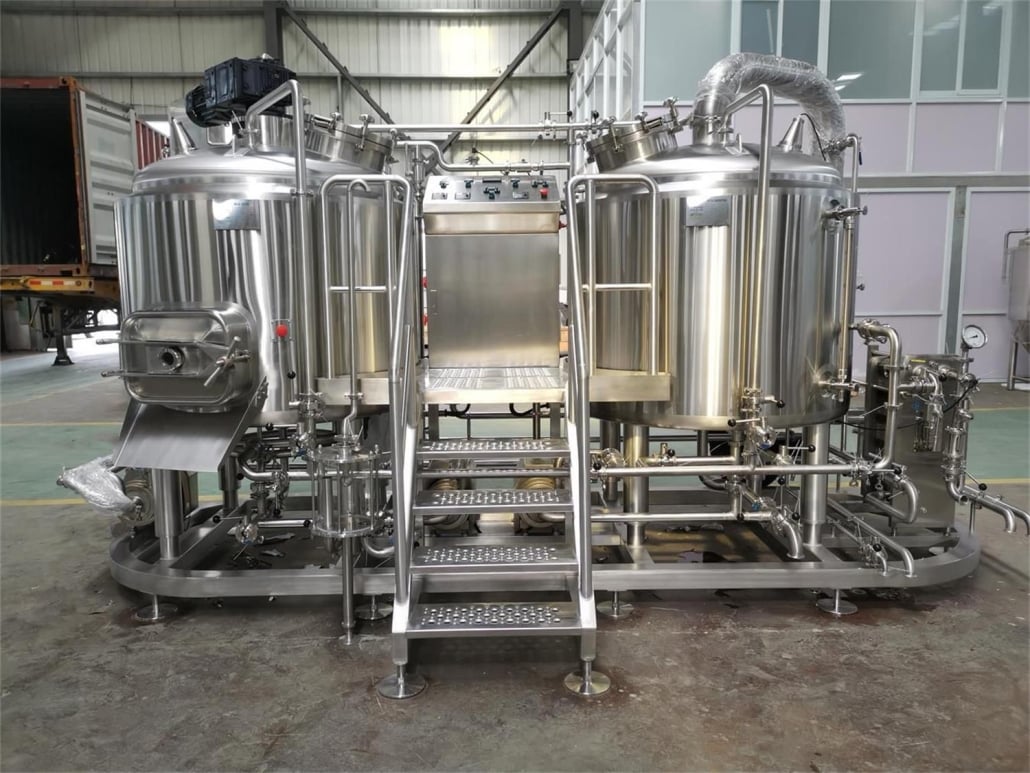
FAQ
Here are answers to some common questions brewers have about 15 barrel mash tun functionality:
Table 9. 15 BBL Mash Tun FAQs
| Question | Answer |
|---|---|
| What is the difference between direct steam vs indirect steam heating? | Direct steam injects live steam via coils or jackets within the mash tun walls to heat directly. Indirect uses an external heat exchanger boiler that pumps hot water into the tun jacket instead. |
| How much hot liquor is used for mash and sparge in a typical 15 BBL recipe? | With a grist to liquor ratio around 1 qt per lb of grain, roughly 350 lbs of grain x 4 qts per lb, you need about 1,400 qts or 35 barrels of hot liquor water (at 170F) for a full 60 minute mash rest and sparge cycle. Ensure your hot liquor tank has adequate capacity, with allowance for heating other vessels. |
| What flow rate should my treated brewing water system support? | To fill the mash within an hour requires over 30 gpm, for example filling a 30 barrel tun. Flow rates at least this high are recommended from your water treatment system’s carbon filtration and reverse osmosis arrays. |
| Is single infusion mashing cheaper than a step mash system? | Generally yes – single infusion tuns without advanced heating controls or automation save substantially on equipment cost. But you lose the ability to precisely hit specialty mashing temperatures for improved quality or efficiency in complex beer recipes. |
| How much floor space does a 15 BBL mash tun system take up? | Approximately 25-30 square feet of floor space is needed for the tun system itself – more if surrounding platforms, stairs/railing, and grain handling systems are included. Vertical clearance should exceed 10 feet. |
| How do I choose the right mash tun manufacturer? | Get multiple quotes to compare pricing of tuns with similar components and capabilities. Also request and check references from other breweries using that company’s equipment. Assess track record of quality fabrication, responsive support, and feedback on actual performance in commercial facilities over the long run. |
Running through these FAQs will ensure you cover all key questions when researching your purchase.
Key Takeaways – Investing in a 15 BBL Mash Tun
In summary, a 15 barrel mash tun allows medium-scale breweries to take advantage of larger batch sizes and maximize productivity. When exploring your options:
- Compare vessel construction, heating systems, insulation, and mixing choices to align with your budget and functionality needs
- Research leading commercial mash tun fabricators’ reputation, pricing, and equipment quality
- Carefully plan installation infrastructure like floor space, grain handling, water and steam lines
- Train staff on mash tun operation best practices for temperature control and extraction efficiency
- Follow scheduled cleaning and preventative maintenance protocols
- Consider pros around improved quality and efficiency vs cons like capital outlay, space requirements, and learning curves
While representing a major investment, a properly spec’ed, utilized and maintained 15 BBL mash tun will prove a valuable asset for production growth for years to come. Finding the right mash tun for your existing brewhouse and future goals takes thoughtful research and planning. Use this guide to make the complex decision process easier when evaluating your options.

